by Hans Betlem, Sierra Nevada, Andalucia, Spain
| Impressions | Results |

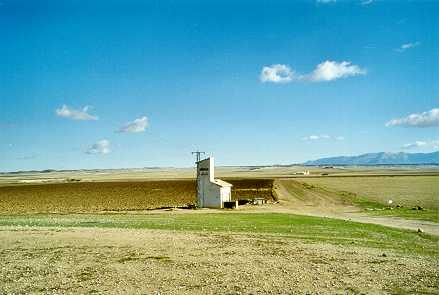
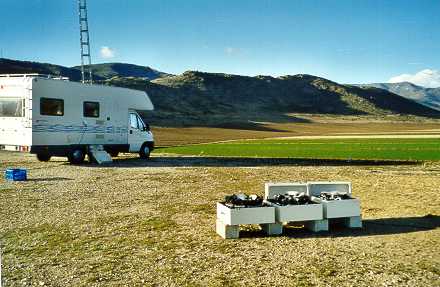

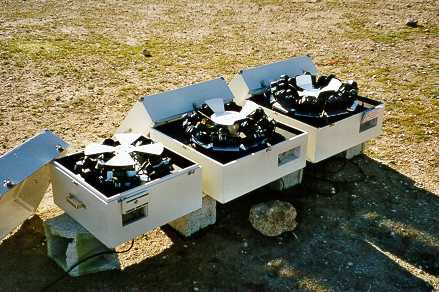

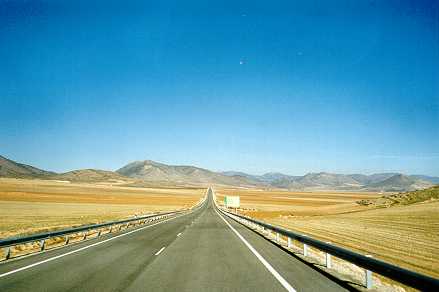
by Hans Betlem, Sierra Nevada, Andalucia, Spain
First photographic results station Lucainena, Spain (37°02'13".3 N ; 357°46"01".6 E; alt. 707.5 m) 269 Leonids were photographed from this station, many of them double station with station Curica (37°51'26".6 N ; 357°34'06".2 E; alt. 1007 m) where 417 Leonids were captured on film. On both station batteries of automated Canon T-70 camera's with FD f/1.8-50 mm lenses were used. The rotating shutters occulted at 50 breaks per second.


-2 Leonid on november 18, 2000 2h08m28s UT.
1a (left) Lucainena image in Lep. 1b (right) Curica image in Col.


-5 Leonid fireball on November 18, 2000 4h48m46s UT.
2a (left) Lucainena 2b (right) Curica. Both images in Hya.
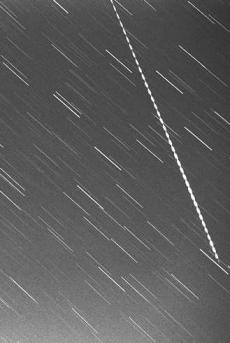


Long trail of a -4 Leonid fireball on November 18, 2000 1h36m43s UT.
3a (left) Lucainena 3b (center) Curica (begin) 3c (right) Curica (end)
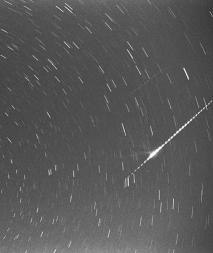
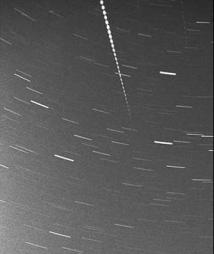
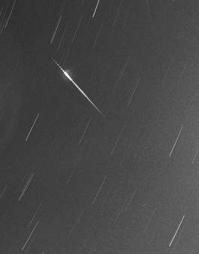
-8 Leonid fireball with terminal flare. November 18, 2000 2h41m43s UT. The fainter meteor appeared at 2h40m03s UT and was also photographed from both stations.
4a (left) Lucainena (end) 4b (center) Lucainena (begin) 4c (right) Curica.

3 brilliant Leonid images near Polaris. November 18, 2000.
From right to left: 5h08m20s UT (-2) ; 5h10m08s UT (-1.5) ; 5h09m23s UT (-1) Curica photograph.

-3 Leonid in Draco. November 18, 2000 3h48m26s UT. Curica.


Double station sporadic meteor (-2) on november 19, 2000 0h35m06s UT.
Images from Curica (left) and Lucainena (right).
The radiant is computed in the southern part of Auriga.
| a (AU) | 28.8 | h begin (km) | 104.0 |
| e | 0.966+/-0.003 | h end (km) | 69.3 |
| q (AU) | 0.127+/-0.002 | V inf (km/s) | 44.3+/-0.3 |
| omega | 318.22+/-0.08 | Radiant (2000.0) | |
| node | 236.97950 | RA | 78.89+/-0.03 |
| i | 22.8+/-0.4 | DEC | 32.60+/-0.02 |

Very long trail of an early Leonid, crossing through Cygnus.
Curica, November 18, 2000 between 0h38m and 0h48m UT.
Curica images: Taken and processed by Hans Betlem.